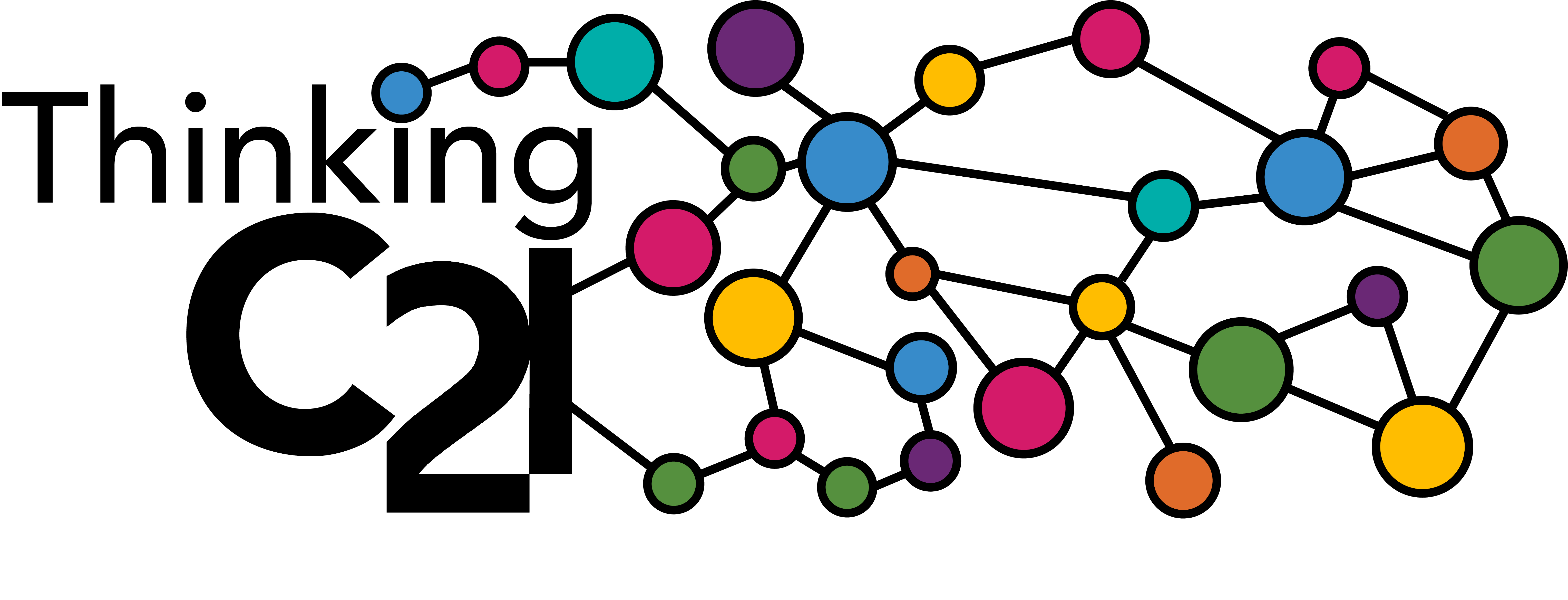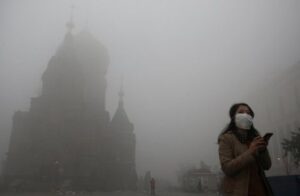October 22, 2013: What does it feel like to live in the anthropocene? My experience in reading three stories on facing pages of this morning’s New York Times speaks directly to this question, as well as to what I have for the past couple of years been calling radical mediation. More specifically these stories brought home for me the fact that living in the anthropocene means living with a more or less constant sense of impending catastrophe. Furthermore they underscored how the interconnected, global nature of impending catastrophe is inseparable from our experience of the reality of mediation in the human and nonhuman relations that make up our lives in the anthropocene. Let me explain.
Coined by Nobel Prize-winning atmospheric chemist Paul Crutzen at the inception of the 21st Century, the concept of the anthropocene postulates a new geological epoch defined by overwhelming human influence upon the Earth. The concept has since been picked up and expanded by other scientists, chiefly but not exclusively geologists and planetary ecologists. More recently the anthropocene has caught the imagination of humanists, artists, and social scientists, for whom it has provided a powerful framework through which to account for and depict the impact of climate change in a variety of media forms and practices. Although the anthropocene might be understood as placing humans at the center of the world, a mark of the importance and growth in scope power and influence of the human, it is in fact the opposite, the recognition that individual and collective human actions now operate on the earth’s atmosphere and climate in much the same way as nonhuman climatological or geological forces so, independent of and often in contradiction to human will, intent, or interest. Although unnamed in today’s New York Times, the anthropocene clearly shapes the experienced relations among these three stories.
The first story, the only one to merit a spot on the front page of the Times‘ print edition, deals with civilian deaths in drone strikes in Pakistan’s frontier town of Miram Shah. The story describes reports by Amnesty International and the Human Rights Watch about intense levels of distress produced among residents of Pakistan’s western tribal areas, the collective fear and anxiety that one could at any moment be the victim of a US drone strike: “’The drones are like the angels of death,’ said Nazeer Gul, a shopkeeper in Miram Shah. ‘Only they know when and where they will strike.’” Miram Shah, the article tells us as it continues on page 10, “has become a fearful and paranoid town, dealt at least 13 drone strikes since 2008, with an additional 25 in adjoining districts — more than any other urban settlement in the world. Even when the missiles do not strike, buzzing drones hover day and night, scanning the alleys and markets with roving high-resolution cameras.” Although drones do not immediately call to mind the climatological concerns of the anthropocene, there can be no doubt of their impact on the affective climate of Miram Shah: “Sales of sleeping tablets, antidepressants and medicine to treat anxiety have soared, said Hajji Gulab Jan Dawar, a pharmacist in the town bazaar. Women were particularly troubled, he said, but men also experienced problems. ‘We sell them this,’ he said, producing a packet of pills that purported to treat erectile dysfunction under the brand name Rocket.”
What made me think of this story in terms of the anthropocene was another story on page 11, facing the Miram Shah story, titled “Smog Envelops and Chokes City in Northeast China.” “’You can’t see your own fingers in front of you,’ the city’s official news site explained helpfully. In the same vein, a resident of Harbin commented on Sina Weibo, the popular microblog platform, ‘You can hear the person you are talking to, but not see him.’ Another resident added that he couldn’t see the person he was holding hands with.” Clearly a product of anthropogenic forces associated with China’s agricultural and industrial practices–“The city weather bureau blamed the pollution on three factors: a lack of wind; local farms burning corn leaves and stalks after the harvest; and the start of the municipal central heating system, which provides heat to millions of homes and offices and relies on large coal-burning boilers across the city”–the smog in the city of Harbin is producing an impact on its affective climate, the “experienced relations” of humans and nonhumans which, while different in tone from that of Miram Shah, shares with it a sense of impending threat. Thus while these threats manifested themselves very differently–the anxious invisibility of a potential drone strike almost diametrically opposed to the obscuring visibility of the omnipresent smog–the experienced relations of residents of both cities were both directly related to geopolitical, anthropogenic changes in the atmosphere.
The third story, “After Storm, Toxic Water Overflows in Japan,” was printed in the right-hand column juxtaposed to the Chinese “Airpocalypse” story. Described as “the latest in a litany of lapses and aggravations for the problem-plagued cleanup of the Fukushima Daiichi plant,” the story concerns ongoing problems with radiation leaks as a result of the botched response to the March 2011 Sendai earthquake by both the Japanese government and Tepco, the Tokyo Electric Power Company. After recent rains, Tepco “tested water in the ponds that overflowed and found that a half-dozen were contaminated with levels of radioactive strontium-90 above the limit of 10 becquerels per liter set by regulators for releasing water into the sea. Radiation levels at the most contaminated site were 71 times that limit.” Among other dangers, “Releases of strontium are particularly worrisome because it can collect in human bones and possibly cause leukemia.”
Here, as in the Miram Shah drone story, the threat experienced as a result of these continued leaks is very much impending and invisible–registered in increased levels of radioactive strontium-90–even though, also as in Pakistan this threat is prompted by memories of previous disasters, drone strikes or quake-induced meltdowns. And like the Chinese “airpocalypse” story, this one is explicitly anthropogenic and environmental, resulting directly from technologies for generating electric power and their impact on the atmospheric or aqueous climate. Perhaps not coincidentally these stories could also be seen as portraying an Asiatic or Orientalist anthropocene, one which evokes images of an Asiatic threat, most notably in the inexorable movement of toxic radiation across the Pacific to the west coast of the US. Taken together, however, these three stories more directly provide a mediated experience of anthropocenic relations for New York Times readers, connecting their experiences through the journalistic mediation of the newspaper with those of the affected residents of Pakistan, China, and Japan.
In a crucial passage on the theory of radical empiricism, William James writes: “To be radical, an empiricism must neither admit into its constructions any element that is not directly experienced, nor exclude from them any element that is directly experienced. For such a philosophy, the relations that connect experiences must themselves be experienced relations, and any kind of relation experienced must be accounted as ‘real’ as anything else in the system.” In developing the concept of radical empiricism, James means to reject both the realism that starts with objects or the real in itself and the rationalism of an idealism that sees the real as an imperfect manifestation of a universal logos or spirit. By starting with experienced relations, James would start in the middle, in what he calls “the blooming, buzzing confusion of the world.”
What I mean to suggest by the concept of radical mediation can be understood if we substitute “mediation” for “relation” and “immediate” for “real” in James’s definition: “the mediations that connect experiences must themselves be experienced mediations, and any kind of mediation experienced must be accounted as ‘immediate’ as anything else in the system.” I make this substitution to insist that while mediations could be, and indeed are, relations, they are also transformations or disruptions or modulations. Mediations are always re-mediations which change or translate experiences as well as relating or connecting them. In radical mediation all connections involve modulation, translation, or transformation, not just linking. Because mediation is not separate from other experienced relations, it does not stand between a preexistent subject and object, or prevent immediate experience or relations, but rather transduces or generates immediate experiences and relations that did not preexist their mediation.
Reading these three articles in relation to one another provides readers of this morning’s New York Times a mediated experience of living in the anthropocene that both connects with and radically remediates the experiences of those residents of western Pakistan, northeast China, and eastern Japan. From the perspective of radical mediation, this experience is best understood not as a linguistic or journalistic representation of three distinct, autonomous, unrelated events whose connections pre-exist their mediation by both the Times and this blog, but rather as an experience of impending catastrophe that “must be accounted as ‘real’ as anything in the system.” What makes anthropogenic climate change itself an instance of radical mediation is that it cannot be understood apart from its remediation of the experience of impending catastrophe for both human and nonhuman alike.
[Richard Grusin is director of the Center for 21st Century Studies.]


